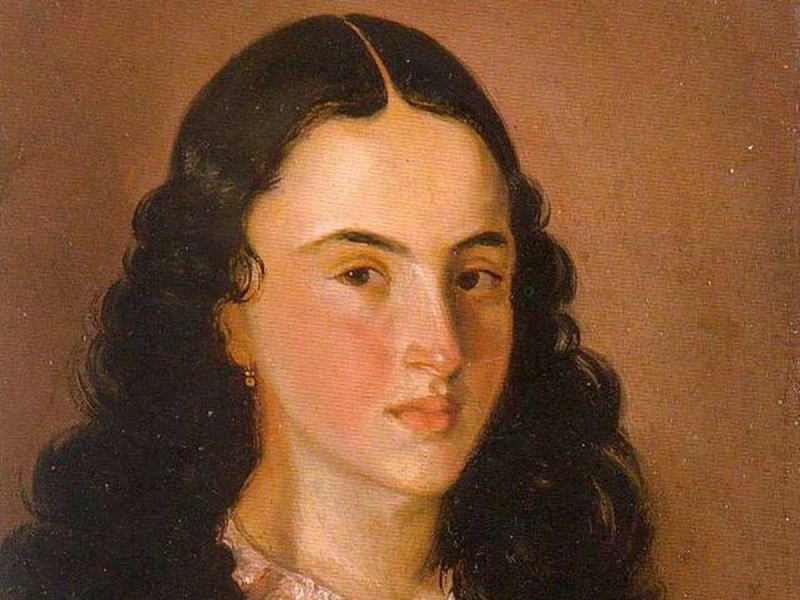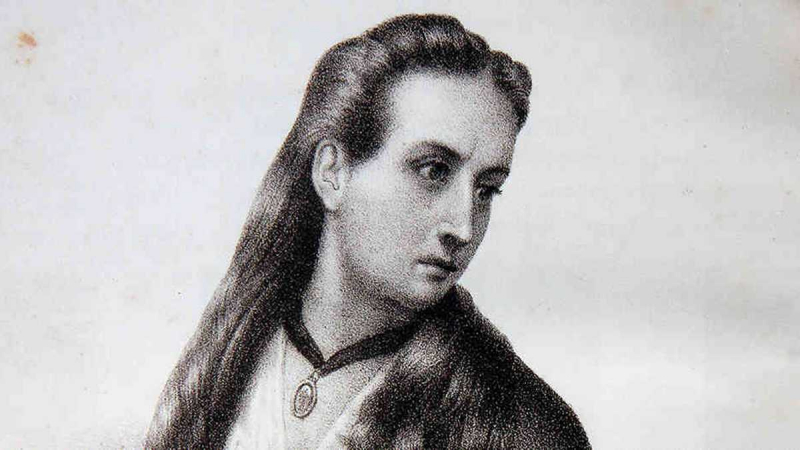Policarpa Salavarrieta
Policarpa Salavarrieta, also known as La Pola, was a Neogranadine seamstress who spied for the Revolutionary Forces during the Spanish Reconquista of the Viceroyalty of New Granada. She was apprehended by Spanish Royalists and executed for high treason. The Colombian Woman Day is observed on the anniversary of her death. She is now regarded as a Colombian independence heroine and among the most important historical figures in Colombia.
Policarpa was not involved in politics prior to 1810, but by the time she returned to Bogotá in 1817, she was actively participating in political issues. Because Bogotá was a Reconquista stronghold where the majority of the population supported Pablo Morillo's takeover, it was extremely difficult to enter and exit the city. Policarpa and her brother Bibiano entered the capital with forged documents and safeguards, as well as a letter of introduction written by two Revolutionary leaders, Ambrosio Almeyda and José Rodrguez; they recommended that she and her brother stay in the house of Andrea Ricaurte y Lozano under the guise of working as her servants. In reality, Andrea Ricaurte's house was the epicenter of the capital's intelligence gathering and resistance.
Policarpa was regarded as a revolutionary in Guaduas. Because she was unknown in Bogotá, she was free to move around and meet with other patriots and spies. She could also infiltrate the royalists' homes. Policarpa offered her services as a seamstress to the wives and daughters of royalists and officers, altering and mending clothing for them and their families while overhearing conversations, collecting maps and intelligence on their plans and activities, identifying who the major royalists were, and determining who was suspected of being revolutionaries.
Policarpa, with the help of her brother, secretly recruited young men for the Revolutionary cause. They worked together to increase the number of soldiers needed by the Cundinamarca insurgency.
Policarpa's operations went unnoticed until the Almeyda brothers were apprehended while transporting information back to the insurgents outside Bogotá. Their information linked La Pola directly to the Revolution. The Almeyda brothers and La Pola were involved in assisting soldiers to desert the Royal Army and join the Revolution; transporting weapons, ammunition, and supplies to the insurgents; and assisting the Almeydas in escaping from prison when they were apprehended in September of the same year and finding refuge in Machetá. They had hoped that their connection with La Pola would be useful in the event of a city revolt. The loyalists suspected her of treason, but there was insufficient evidence to charge a seamstress with espionage and treason.
The arrest of Alejo Sabaran while attempting to flee to Casanare enabled the royalists to apprehend La Pola; he was apprehended with a list of royalists and patriots provided by Policarpa.
Sergeant Iglesias, the chief Spanish officer in Bogotá, was charged with her capture and detention. Policarpa Salavarrieta and her brother Bibiano were arrested at Andrea Ricaurte y Lozano's house and taken to the Colegio Mayor de Nuestra Señora del Rosario, which had been converted into a makeshift prison.
On November 8, 1967, the Congress of the Republic of Colombia passed and President Carlos Lleras Restrepo signed Law 44, which declared November 14 to be the "Day of the Colombian Woman" in honor of the death anniversary of "our heroine, Policarpa Salavarrieta."
Policarpa Salavarrieta has appeared numerous times on Colombian currency over the years. While many idealized or mythological female figures have appeared, her portrait was the only one of an actual female historical personality ever used for a long time. Lady Liberty, Justice, an unknown Native American woman representing all indigenous peoples in Colombia, and, most recently, Mara, a fictitious character from Jorge Isaacs' novel of the same name, pictured with the author, are among the other images. The only denomination still in circulation with Policarpa Salavarrieta's image is the "Diez Mil Pesos" bill ($10,000).







